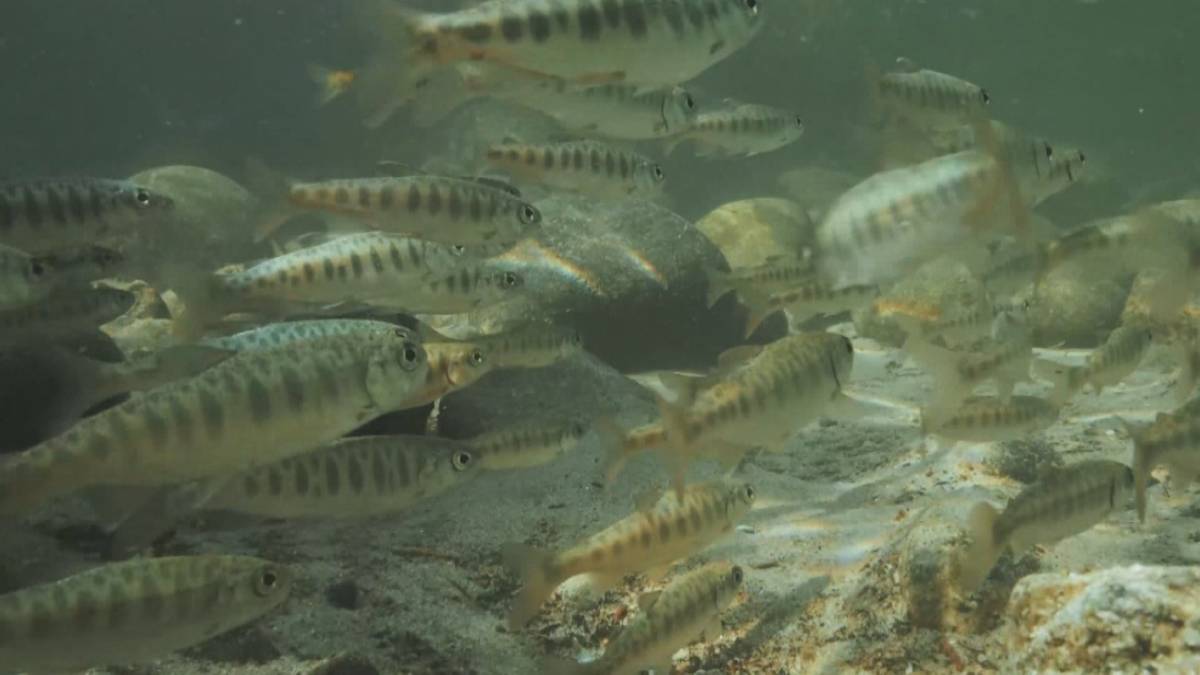As a teenager, Murray Ned was used to fishing for salmon three days a week throughout the year on the Fraser River in southwestern British Columbia.
Three decades later, the former Sums First Nation councilor and member of the joint U.S.-Canadian Pacific Salmon Commission said he expects salmon fisheries in the river to have been open for a total of 25 days or less. throughout the year.
Read more:
UBC researchers map Pacific salmon habitat loss
Salmon is in crisis, he said, while Indigenous, commercial and recreational fishers await details on the federal government’s latest plan to recover plunging stocks.
“We are literally losing our food security, but also our safety and cultural integrity and connection to the Fraser River and the salmon species that accompany it,” Ned, who is also the executive director of the Lower Fraser Fisheries Alliance.
“The ability to transfer knowledge to the young from the old … we are losing that every day that we cannot be on the river.”
Complete data on salmon that returned to their spawning streams this year are not yet available, but Fisheries and Oceans has said that many populations are declining to “record lows” due to the impacts of climate change, habitat loss and other. threats.
Read more:
Sockeye salmon returns plummet in British Columbia, official calls 2019 ‘extremely challenging’
In the latest budget, Ottawa pledged about $ 650 million over five years for the Pacific Salmon Strategy Initiative that was released in June, but few details have been released on how the money would be spent on recovery plans for the Pacific. Salmon.
Ned said he sees the salmon strategy initiative as “a black hole right now.”
In a video posted online, former Fisheries Minister Bernadette Jordan called the initiative “the largest and most transformative investment in salmon by any government in history,” and says it would be “built from scratch,” in partnership with all levels of government. , Indigenous peoples, industry and environmental groups.
Related Videos
A new minister has yet to be named after Jordan lost his seat in the Sept. 20 vote that gave Prime Minister Justin Trudeau’s liberals another minority government.
Ottawa’s new strategy has four pillars: conservation, with better habitat monitoring and ecosystem planning, hatchery improvement, fisheries ‘transformation’, and collaboration with different levels of government, including indigenous nations.
The plan would add $ 100 million to BC’s Salmon Restoration and Innovation Fund of $ 142.85 million and create a new “restoration expertise center.”
The new Pacific Salmon Trade Transition Program is also expected to give harvesters the option to withdraw their licenses at fair market value, helping to create a smaller commercial harvesting sector, Ottawa said.
In June, the federal government announced the closure of about 60 percent of commercial salmon fisheries for this season. He said recreational fisheries would also be restricted where trade closures exist to conserve stocks.
However, Greg Taylor, an independent consultant advising the British Columbia-based nonprofit Watershed Watch Society, said a commercial fishery for pink salmon from the Fraser River that had been between the closures was open for several days. earlier this month.
Roses aren’t “super plentiful,” he said in an interview, but they’re not doing as badly as the coho and steelhead that run with them, at risk of being caught.
Read more:
Feds Fail To Protect Key Fraser River Spawning Ground From ATVs: Biologists
The Committee on the Status of Endangered Wildlife in Canada has assessed two populations of rainbow trout spawning in tributaries of the Fraser as endangered and in 2018 recommended an emergency list under the Endangered Species Act, which would activate the habitat protection, but that was rejected by the federal cabinet.
A Fisheries and Oceans Canada advisory posted online said the pink fishery was “designed to address restrictions on animal populations,” other species needed to be released unharmed and observers were required, although Taylor said salmon fisheries tend to need better observation to ensure that the threatened fish are not disturbed.
Taylor said Fisheries and Oceans indicated that there would be meaningful consultation with stakeholders in the salmon catch before any further changes, so the opening of the pink fishery “undermines (their) confidence” in the rest of the new fishing strategy. Ottawa.
Fisheries and Oceans did not respond to questions about the opening of the pink fishery and the new strategy that is still being developed in time for publication.
Commercial collectors should receive fair compensation for withdrawing their licenses, Taylor added. But he believes that the $ 647 million allocated to the salmon strategy should go to conserving and restoring salmon populations, while the money Ottawa would need to buy licenses should come from elsewhere.
Read more:
New documentary highlights importance of Vancouver’s urban salmon
“The last time we did a major buyback, it cost more than $ 250 million in $ 2021. I’m not saying it’s going to be that much anymore, but you take $ 50 or $ 100 million out of the $ 647 (million) to start compensating commercial fishermen, that weakens it ”.
Ned said his top priority is to see the allocation of funds through true government-to-government relationships with First Nations, in accordance with BC’s 2019 law adopting the United Nations Declaration on the Rights of Indigenous Peoples. .
They should be part of making decisions about funding requirements and how projects are implemented to support the recovery of salmon in their territories, he said.
While many indigenous groups have received money for projects under British Columbia’s salmon restoration fund, for example, so have many nonprofits who, according to Ned, are still learning how to work with First Nations.
In addition to the new Pacific salmon strategy, the federal government has adopted a 2018-22 implementation plan for its Wild Salmon Policy established in 2005.
© 2021 The Canadian Press
Reference-globalnews.ca
